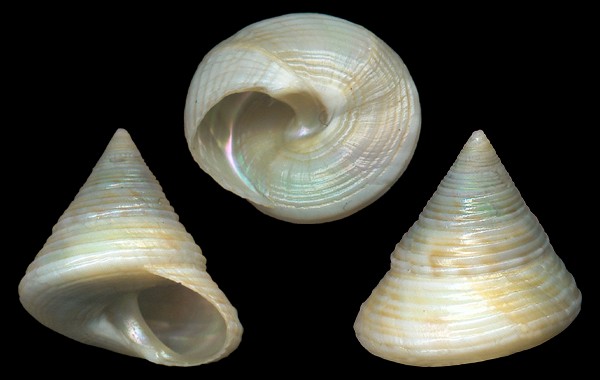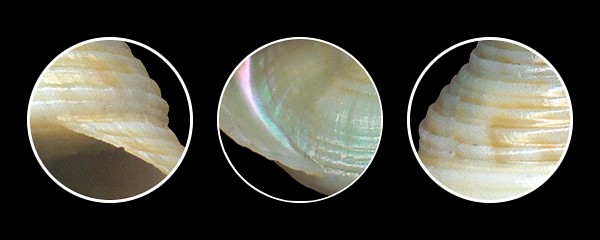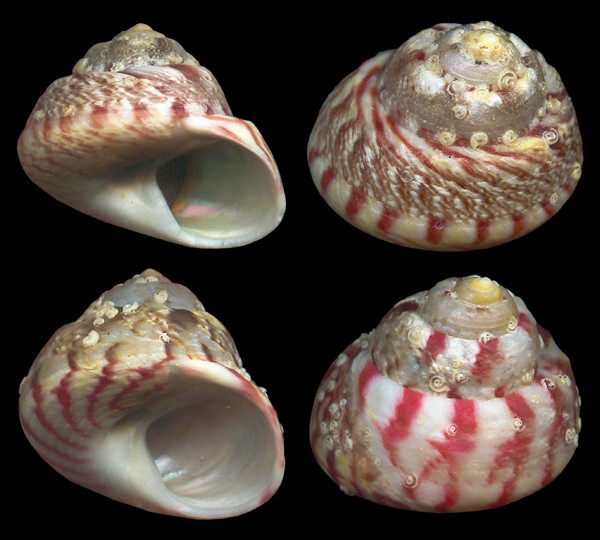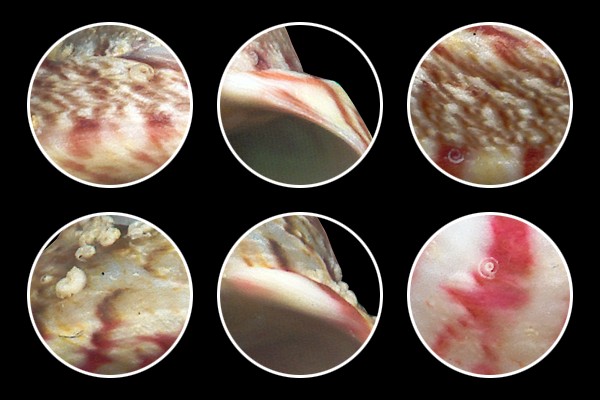Offshore, in wide ripple-marks, sand-gravel bottom, 50cm deep.

19mm. Close to the form "lyonsi" Leach in Forbes & Hanley, 1847.
In ripple-mark, among Gibbulas and various bivalves, at 30m off a reef, far in the bay.
In ripple-mark, among Gibbulas and various bivalves, at 30m off a reef, far in the bay.

The form is characterized by strong spiral cords, and faded colours on a white background.
Said to live in deeper water than coloured specimens, but this is not so clear.
As the swimming larvae can land everywhere, in shallow water like in deeper bottoms,
this "pale" feature may appear after landing, along the time, in individuals (diet factors),
or by natural selection (predators). Many pictures show deep water Painted Topshells
with their full colours, while this one was found subtidal in open sea, far from any rocky shelter.
It has been noticed that the form "lyonsi" moves quicker, and stands low tides better:
"Snails with white shells reflect heat better [...] In the event of exposure at low tide,
a white shell would help minimize thermal stress" (see links below).
Said to live in deeper water than coloured specimens, but this is not so clear.
As the swimming larvae can land everywhere, in shallow water like in deeper bottoms,
this "pale" feature may appear after landing, along the time, in individuals (diet factors),
or by natural selection (predators). Many pictures show deep water Painted Topshells
with their full colours, while this one was found subtidal in open sea, far from any rocky shelter.
It has been noticed that the form "lyonsi" moves quicker, and stands low tides better:
"Snails with white shells reflect heat better [...] In the event of exposure at low tide,
a white shell would help minimize thermal stress" (see links below).

